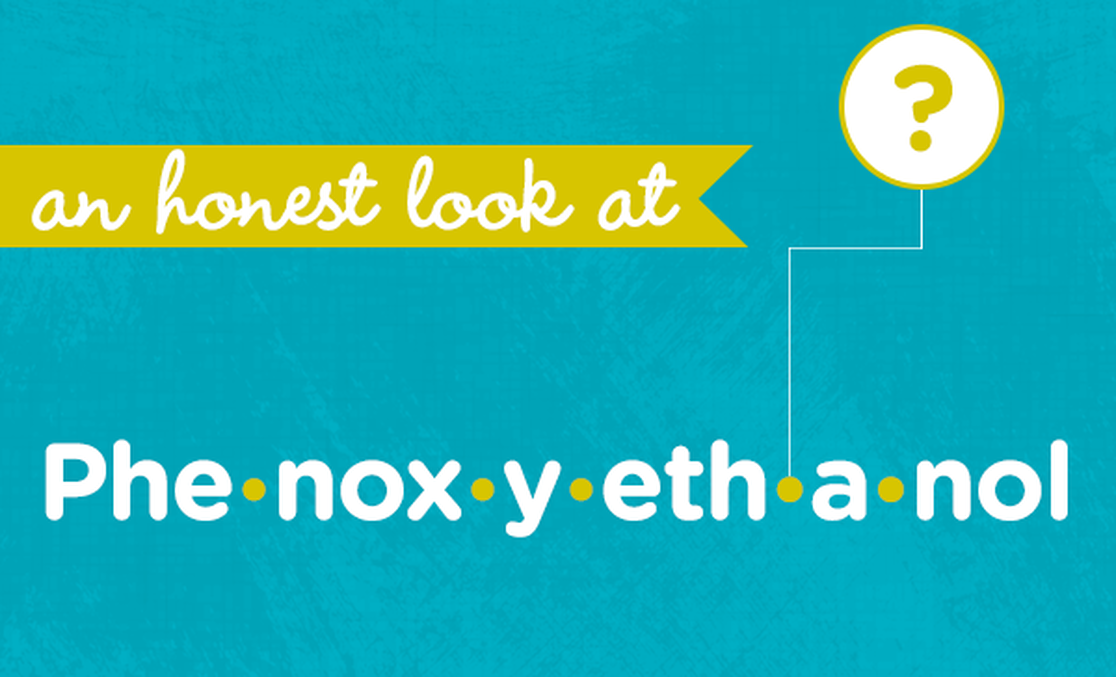This is part of our ongoing series helping consumers better understand chemicals, chemistry, and cosmetic formulations. We translate the science, bust the myths, and give you an honest assessment of common ingredients in personal care products so that you can make informed choices for your family!
When it comes to knowing what's in your skincare, it's essential that you review each cosmetic ingredient so you can understand what you're putting on your body. While some ingredients can cause irritation or other side effects, we select alternatives known to be more calming. In this blog post, we will cover a common preservative found in our cosmetic formulations, Phenoxyethanol.
What Is Phenoxyethanol in Skin Care?
Phenoxyethanol can be found naturally in green tea, but the commercial ingredient is synthetically produced in a laboratory, creating what’s termed a “nature identical” chemical.
What Does Phenoxyethanol Do?
In the simplest terms, Phenoxyethanol is used to fight bacteria. Most personal care products are made with a lot of water and various nutrients which creates an incredibly hospitable breeding ground for microorganisms. What’s worse – the product might smell and look just fine but be swarming with bacteria or fungi that are dangerous to your health. Effective preservatives are vital for ensuring safety in all beauty products!
Why Is Phenoxyethanol Used in Personal Care Products?
We use phenoxyethanol as a preservative in a few products (Multi-Surface Spray & Calm & Porefect Serum) because the most accessible alternatives for these types of formulas include parabens and formaldehyde-releasing preservatives. Both are chemicals with demonstrable evidence of potential health risks, whereas phenoxyethanol is very safe at low levels. When it comes to clean beauty, you want to go with personal care products that are cruelty-free and paraben-free. It’s been tested on the skin and eyes, and it is non-irritating and non-sensitizing at levels of 2.2% or lower while being effective at only 1% concentrations. The European Union and Japan both approve its use up to that 1% level, and our formulas fall well below the recommendation at 0.5% or less (depending on the specific cosmetic product).
Even better, phenoxyethanol doesn’t react with other ingredients, air or light. This kind of stability makes it an incredibly effective preservative in cosmetics.
Why We’re Featuring it Today
We regularly hear from customers concerned about this ingredient because there’s quite a bit of online controversy about its safety. You’ll find it mentioned everything from a developmental and reproductive toxicant to being linked to cancer. Fundamentally, it’s poorly interpreted science.
Here’s the real deal: Most studies that have found significant negative health impacts are based on full-strength or high-dose exposures. In terms of actual usage, exposures are quite small. That’s why it’s approved at levels up to 1%. It’s all about the final formulation.
Think of it like a cupcake recipe. You wouldn’t want to eat a mouthful of salt, or raw egg, or flour, or probably any other ingredient that goes into a cupcake. (Not only would it taste disgusting, eating a bunch of salt or raw eggs could make you sick!) But mixed in just the right amounts, baked just the right way, a cupcake is divine. That’s the magic of chemistry! Cosmetic product formulations work the same way.
As always, our products are Toxicologist Audited for long-term health effects and clinically tested for immediate reactions like irritation, which includes the use of phenoxyethanol. Have any other questions or concerns about phenoxyethanol? We’re happy to hear them and help you better understand this cosmetic preservative ingredient!
Learn more:
9 Final Report on the Safety Assessment of Phenoxyethanol. (1990). Journal of the American College of Toxicology, 9(2), 259–277. https://doi.org/10.3109/10915819009078737
Phenoxyethanol. (n.d.). Cosmetics Info
https://www.cosmeticsinfo.org/ingredient/phenoxyethanol
CIR Safety Review: The CIR Expert Panel reviewed safety data on Phenoxyethanol and noted that it was practically nontoxic via oral and dermal administration. https://online.personalcarecouncil.org/ctfa-static/online/lists/cir-pdfs/pr139.pdf
We aim to provide you with the most honest and credible information possible. This article was reviewed for accuracy by The Honest Team and its internal technical experts.
blog_review_statement



